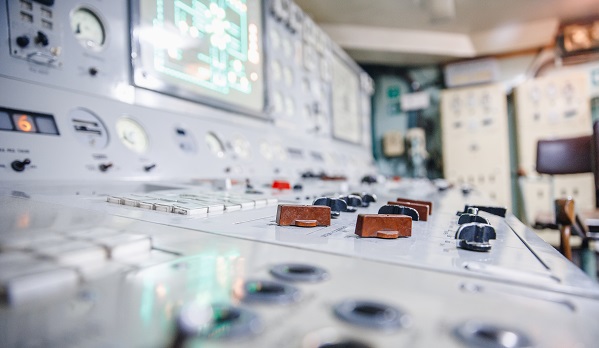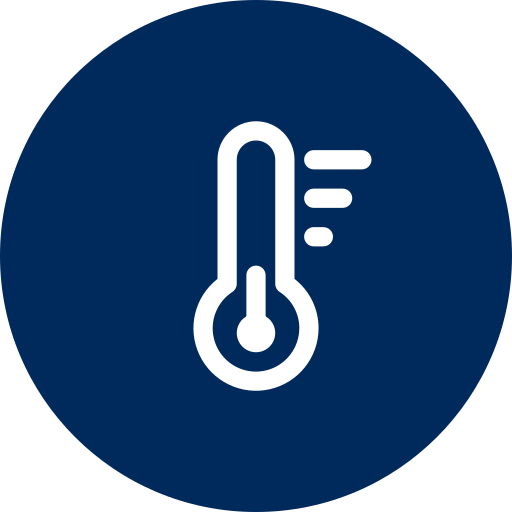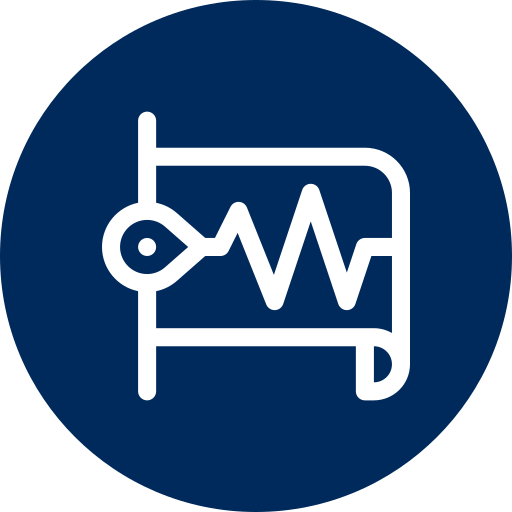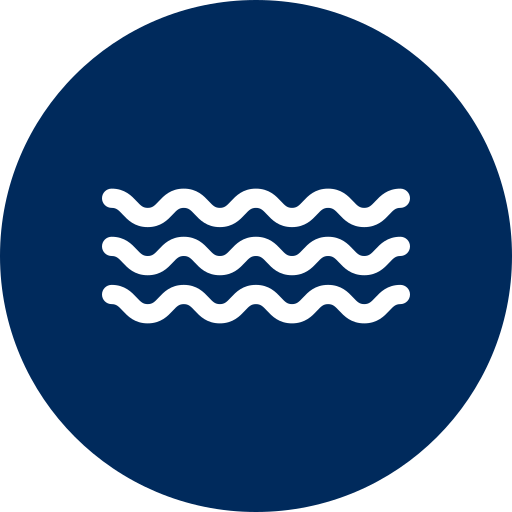Testing that Reaches the World
Equipment Qualification(EQ) Services
Clark Testing provides full-spectrum Equipment Qualification Services (EQ) in accordance with the stringent quality standards required for the US Defense Department (DOD) and commercial nuclear power industry. Clark's ISO 17025 Quality Program along with NQA-1 and 10 CFR 50, Appendix B Quality Programs ensures our customer’s product testing and supporting documentation consistently meet our customer’s requirements.

The Dynamics lab at Clark Testing has had extensive experience in conducting EQ Programs for equipment manufacturers supporting the US Navy, US Army, US Air Force and the Nuclear Power Industry. These EQ Programs commonly include: MIL-Std 810 Equipment Qualification, MIL-Std 461 EMC and MIL-Std 901 Equipment Qualification and NQA-1 Equipment Qualification Programs.
Equipment Qualification is a Four Step Process at Clark Testing:
- Clark’s engineering team conducts a comprehensive Review & Analysis of the customer requirements, component applications and industry standards.
- Collaboration between Clark’s engineering team and the EQ Program stakeholders ensures that the EQ program, including the related Test Plan, is developed to comply with customer’s objectives.
- Customer-Specific Acceptance Criteria (CSAC) is developed with Clark’s customer and any downstream users
- Test Programs are implemented under the quality (QA) guidelines and in accordance with industry standards.
- The typical test disciplines for DOD EQ programs include: vibration • shock • EMC/EMI • salt/fog • environmental• altitude • sand & dust • wind & rain
- EQ programs for the nuclear power industry typically include: seismic • vibration • EMC/EMI • Environmental
- Guiding Documentation including Test Plan, Procedures and Test Reports are drafted to provide certification and qualification of the component and the program itself.
Typical Equipment Qualification for a Military DOD Program:
Military DOD EQ Programs can be conducted under ITAR & CMMC Security Procedures
The initial phase of an EQ program begins immediately with the secure transfer of Controlled Unclassified Information (CUI). Military DOD EQ programs are directed to Clark’s secure web portal and begin under qualified ITAR and CMMC procedures. The team of Clark engineers reviews the EQ requirements along with the test specifications to determine the required test protocols.
Based on the broad array of services we offer, Clark Testing has the capabilities to offer a single source for full Military EQ programs. Clark has provided testing and EQ services for numerous DOD contractors as well as the various branches of service including Navy, Army & Air Force. All testing is conducted under our certified ISO 17025-2017 accreditation and in accordance with MIL Standards including: MIL-Std 810, MIL-Std 901 & MIL-Std 461.
High Impact Shock Testing
Clark Dynamics MIL-Std-901D shock stand simulates the high impact medium weight shock requirement for shipboard equipment in accordance with NAVSEA. Shock loading for shipboard equipment is categorized in accordance with several standards including grades, classes, and types of equipment. Each category defines the unit's importance to the ship operations, method of installation within the ship structure and required performance during shock testing.
Clark’s MIL-Std-901D medium weight shock stand has been NAVSEA approved and can test equipment with multiple mounting configurations. The test stand is a pendulum/hammer system with a 3,000# hammer that strikes the base of the test frame. The maximum weight capacity of a test article for the MIL 901D medium weight shock test is 7,000 lb
Vibration Aging
Clark Testing’s vibration laboratory has multiple hydraulic and electrodynamic shakers that simulate a wide variety of vibration profiles. Our vibration testing is conducted in accordance with MIL-Std 810G and can meet force requirements from 10lbs up to 30,000 lbs. and over a wide frequency range from 5Hz to 2,000Hz. Sinusoidal, random motion, actual time histories and machine generated shock pulses satisfy the numerous vibratory environmental standards (which simulate air, sea, rail, ground transportation, pip vibration and life-cycle aging).
The hydraulic shakers in our vibration lab include a single axis vertical shake table capable of 55,000 lbs. Force + / - 1 in Stroke, a Single Axis Shake Table capable of 30,000 lbs. Force 6" P-P Stroke and a RIM Table with the capabilities of 55,000 lbs Force, 4.95" P-P Stroke.
EMC / EMI Testing
Clark conducts the EMC portion of our EQ programs in our fully accredited ISO 17025-2017 EMC laboratory. Our EMC Lab provides MIL Std-461 product certification and validation services as well as pre-compliance and compliance qualification for a wide range of industries. Clark Testing has several state of the art EMC/EMI chambers which are equipped to handle the requirements of MIL Std-461 for DOD equipment certification.
Cyclical Aging
Clark employs several PLC control systems as well as air, power, hydraulic, and cooling utilities for 24 hour operational aging of the Equipment Under Test (EUT) - to the expected number of lifetime cycles (i.e. open/close, power ON/OFF, ramp Up/Down, etc.) Cyclical aging can be conducted either pre & post-test or during the environmental aging.
Thermal Aging • Heat Rise Analysis • Damp Heat
Utilizing temperature and humidity chambers, Clark simulates high humidity environments as well as cyclic exposure for temperature variations based on the field application. Clark's Environmental Lab can test equipment at different temperature and humidity environments to comply with IEEE 323 or any other commercial/military standards (Methods 501.1, 502.1 and 507.1 of MIL-STD-810 and Method 102A of MIL-STD-202D). Environmental chambers of different sizes, including walk-in rooms, are available to perform test programs. Temperature range of +95°C to -70°C for larger and +170°C to -70°C for smaller units with a relative humidity range of 40% to 100% can be maintained.
Typical Equipment Qualification for an NQA1 Program:
Clark Testing’s Dynamics Laboratory provide Equipment qualification services under its 10CFR50 Appendix B Quality program for both commercial nuclear power and government nuclear facilities. The typical EQ Program allows our customers to upgrade components from industrial/commercial grade to nuclear grade.
The equipment or component being qualified for nuclear application undergoes a comprehensive engineering analysis to ensure “form, fit & function” meet the criteria of the application. Once the analysis is completed, Clark will prepare the Commercial Dedication Instructions (CDI) that includes that physical test plan. Upon review and approval of the test plan, the component will begin a series of testing that, depending upon the application, will include a combination of the following tests:
Seismic Qualification
Clark’s Seismic Test Laboratory features a tri-axial seismic shake table comprised of a 15’ x 15’ hexagon structure operating on an independent tri-axial hydraulic system. Clark Testing Seismic table is capable of performing seismic testing of large packages up to 20,000 lbs. (total test specimen weight including all fixtures) with ZPA of 1G. Higher ZPA's are achieved with lower weight. Clark’s tri-axial shake table is designed to generate independent tri-axial motions meeting IEEE 323 & 344 specifications for NQA1 Qualification.
Loss of Coolant Accident and High Energy Line Break Exposure (LOCA)
- Clark’s approved supplier is fully 10CFR50 Appendix B accredited
- Simulates long duration high temperature and pressure conditions during a cooling system outage
- HELB simulates a steam pressure line rupture and exposes the EUT directly to steam and high temperature with a <= 6 sec ramp.
Cycle Aging
Clark employs several PLC control systems as well as air, power, hydraulic, and cooling utilities for 24 hour operational aging of the Equipment Under Test (EUT) to the expected number of lifetime cycles (i.e. open/close, power ON/OFF, ramp Up/Down, etc.) Cyclical aging can be conducted either pre & post-test or during the environmental aging.
Radiation Aging
- Simulates the total dose of gamma radiation exposure based on the expected service life
- Can be controlled within the daily dose rate for gradual and controlled exposure
- Clark currently has three outside vendors for irradiation services
- Two have active 10CFR AppB programs for independent testing and one can be supervised on site by our team
- Maintain capacity for both large (up to 4x4x6ft @ 4,500lbs.) and small components
Insulation Resistance and Dielectric
Clark utilizes megohmmeters and hipot testers for determination of insulation resistance between conductors as well as the leakage current level under load to ensure electrical safety and compliance.
Thermal Aging • Heat Rise Analysis • Damp Heat
Utilizing temperature and humidity chambers, Clark simulates high humidity environments as well as cyclic exposure for temperature variations based on the field application.
Clark's Environmental Lab can test equipment at different temperature and humidity environments to comply with IEEE 323 or any other commercial/military standards (Methods 501.1, 502.1 and 507.1 of MIL-STD-810 and Method 102A of MIL-STD-202D). Environmental chambers of different sizes, including walk-in rooms, are available to perform test programs. Temperature range of +95°C to -70°C for larger and +170°C to -70°C for smaller units with a relative humidity range of 40% to 100% can be maintained.



